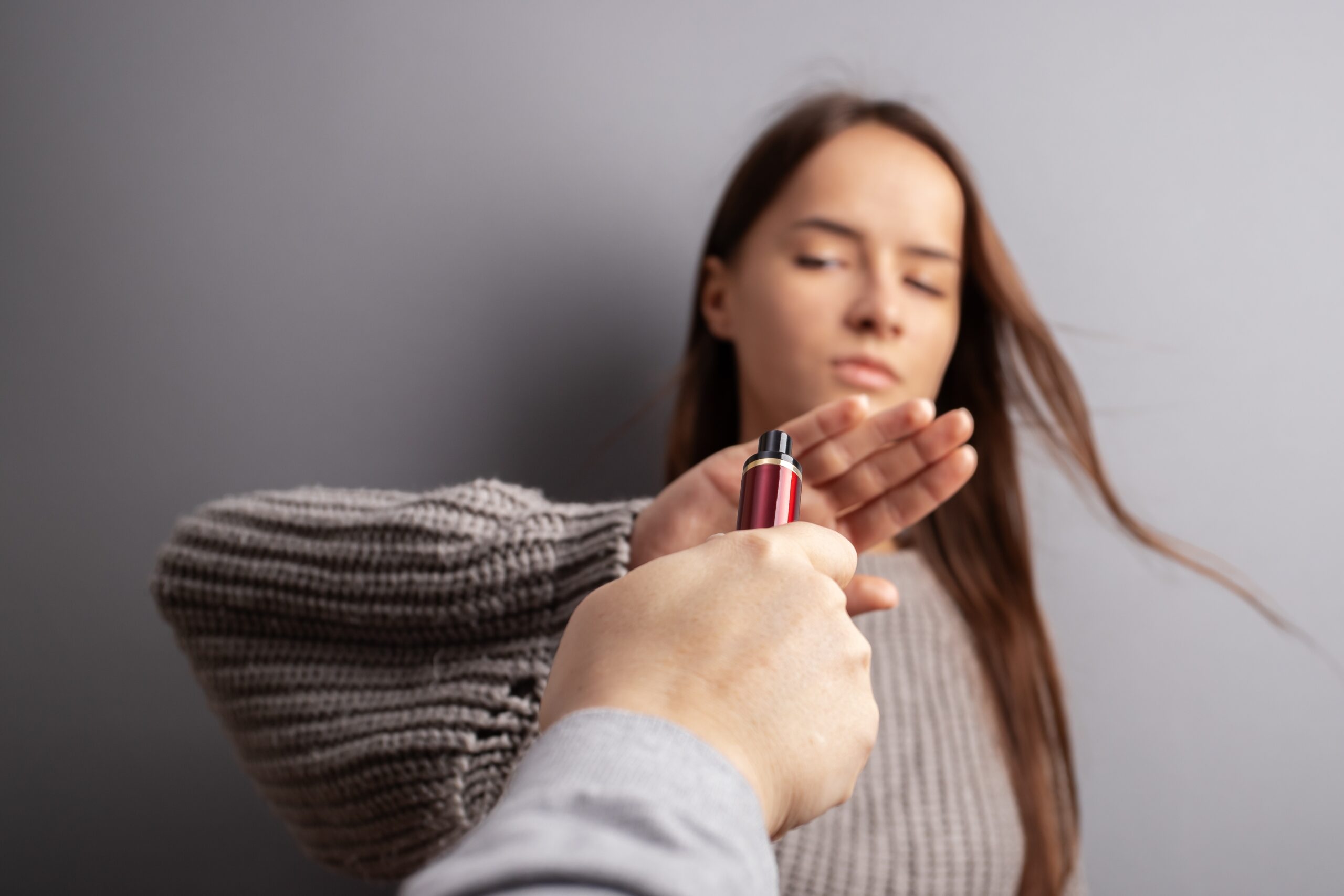The Hidden Dangers of Vaping Unveiled: A Comprehensive Guide To Side Effects Of Vaping

Vaping, once hailed as the groundbreaking alternative to traditional smoking, has rapidly ascended to popularity in the UK. Marketed on promises of being a safer, cleaner way to consume nicotine, e-cigarettes have found their way into the hands of millions, from long-term smokers seeking a cessation tool to teenagers and young adults attracted by the sleek devices and array of flavours.
However, beneath the surface of vaping’s stylish facade and marketing strategies lies a growing body of research unveiling potential health risks and hidden dangers.
As public health officials and researchers delve deeper, the narrative of vaping as a harmless pastime begins to unravel, revealing concerns over lung health, addiction, and the long-term societal impacts.
This article aims to shed light on these hidden dangers, offering a comprehensive exploration backed by UK-centric studies and data. From chemical compositions and addiction risks to regulatory responses and future outlooks, we uncover the multifaceted issues surrounding vaping, providing valuable insights for both users and the wider community.
The Illusion of Safety: Debunking the Myths
The vaping industry often portrays its products as a harm-reduction tool for smokers. While they may lack the burning tobacco and tar associated with cigarettes, this doesn’t equate to safety. Here’s why the “safer” claim is misleading:
Chemical Composition: Traditional cigarettes contain over 7,000 chemicals, many of them carcinogenic. While vape liquids lack these specific toxins, they introduce a new set of chemicals. Propylene glycol (PG) and vegetable glycerin (VG), the base ingredients of e-liquids, are generally considered safe for ingestion.
However, the effects of inhaling them over time, especially at high temperatures, are still under investigation. The heating process in vape devices can also create new harmful substances not present in the original e-liquid.
Nicotine Dependence: Many vape liquids contain nicotine, the highly addictive substance found in tobacco. Nicotine is not harmless. It acts on the brain’s reward system, leading to feelings of pleasure and satisfaction, and ultimately, dependence.
This is particularly concerning for young people whose brains are still developing. Exposure to nicotine can harm brain development, affecting learning, memory, and attention.
Beyond the Puff: A Multitude of Side Effects
Vaping, often hailed as a safer alternative to traditional smoking, has become a widespread phenomenon across the UK. Yet, the implications of inhaling vaporised chemicals go far beyond lung health, affecting various aspects of well-being. This section examines the less-discussed yet significant side effects of vaping, highlighting the need for awareness and caution among users.
Cardiovascular Risks
Recent studies have begun to shed light on the potential cardiovascular risks associated with vaping. Nicotine, a primary ingredient in many e-liquids, is a known stimulant, increasing heart rate and blood pressure. These effects can strain the cardiovascular system, potentially leading to long-term heart conditions.
Research in the UK indicates that the aerosols from e-cigarettes can also contain tiny particles that, when inhaled, may enter the bloodstream, contributing to atherosclerosis, or the buildup of fats, cholesterol, and other substances in and on the artery walls.
This condition can lead to heart attacks, strokes, and other cardiovascular diseases, suggesting that the impact of vaping on heart health is far from benign.
Impact on Oral Health
The oral health implications of vaping are often overshadowed by more immediate concerns such as lung health. However, dental experts in the UK have raised alarms over the increasing evidence of vaping’s detrimental effects on the mouth. The propylene glycol and vegetable glycerine base of many e-liquids can contribute to dry mouth, which, over time, may lead to gum disease and tooth decay.
Moreover, nicotine’s vasoconstrictive properties can reduce blood flow to the gums, inhibiting their ability to fight infection and heal. There is also emerging evidence linking vaping to an increased risk of oral cancers, although further research is needed to fully understand this relationship.
Potential Links to Cancer
While the carcinogenic risk of vaping is still under investigation, early findings suggest cause for concern. Unlike traditional cigarettes, which burn tobacco to release a cocktail of known carcinogens, e-cigarettes heat liquid to create an aerosol that is inhaled.
Although this process eliminates some of the harmful byproducts of combustion, the vapour can still contain potentially dangerous chemicals.
Formaldehyde, a known carcinogen, can form when e-liquid is overheated or not properly aerosolized. Other toxic compounds, such as acetaldehyde and acrolein, have also been detected in e-cigarette aerosols. The long-term implications of exposure to these substances are not yet clear, and research into the carcinogenic potential of vaping is ongoing.
The Psychological and Cognitive Effects
Emerging evidence suggests that vaping may also have implications for reproductive health. Nicotine can cross the placenta, potentially affecting foetal development and leading to complications such as preterm birth, low birth weight, and developmental issues.
For women of childbearing age, the impact of vaping on fertility and pregnancy outcomes is a significant concern.
Additionally, the potential effects of other chemicals found in e-cigarettes on reproductive health are not yet fully understood, highlighting another area where further research is needed.
A Deeper Dive: Exploring Specific Chemicals and Their Impact
The allure of flavoured e-cigarettes has attracted many to vaping, yet the chemical concoctions that deliver these flavours carry a range of health implications. Beyond nicotine, the primary addictive component, e-liquids contain various substances that, when vaporised and inhaled, can pose serious health risks.
Here, we explore some of these chemicals, their roles in vape products, and the impact they have on users’ health.
Propylene Glycol and Vegetable Glycerine: The Base
The majority of e-liquids are based on a mix of propylene glycol (PG) and vegetable glycerine (VG), substances that are generally recognized as safe for ingestion.
However, when vaporised and inhaled, they can have different effects. PG, a thin liquid, carries flavour more effectively and produces a throat hit similar to smoking, which can irritate the respiratory tract.
VG, thicker and sweeter, produces more vapour but can also lead to a buildup of lipid pneumonia over time, a condition caused by the accumulation of fats in the lungs.
Nicotine: The Addictive Element
Nicotine is the addictive substance in both traditional cigarettes and most e-cigarettes, responsible for the habit-forming nature of these products.
While it’s less harmful than many of the combustion byproducts of traditional smoking, nicotine addiction can lead to a range of cardiovascular issues, including increased blood pressure and heart rate, and contribute to the development of heart disease.
Nicotine exposure is particularly concerning for young people, as it can interfere with brain development.
Flavouring Chemicals: A Toxic Mix
The vast array of flavours available for vaping products is one of their most attractive features, yet these flavours often contain chemicals that are harmful when inhaled.
Diacetyl, a buttery-flavoured chemical linked to a serious lung disease known as bronchiolitis obliterans or “popcorn lung,” was found in many flavoured e-liquids, though its use is now more regulated. Other flavouring chemicals, such as acetyl propionyl and acetoin, can also pose risks to lung health.
Formaldehyde and Acetaldehyde: Carcinogens in Disguise
When e-liquid is heated to vaporisation, chemical reactions can occur that produce new compounds, including formaldehyde and acetaldehyde, both recognized as carcinogens.
These substances are formed when PG and VG are overheated, which can happen with improper use or with higher-power vaping devices. The presence of these carcinogens in e-cigarette vapour raises concerns about the long-term risk of cancer associated with vaping.
Heavy Metals: The Hidden Hazard
The heating element in e-cigarettes, often made of metals like nickel, lead, and chromium, can introduce metal particles into the vapour that users inhale.
These heavy metals are known toxins, with long-term exposure linked to lung disease, brain damage, and a variety of cancers. The risk of exposure to these metals is yet another reason for concern over the safety of vaping products.
Benzene: A Petroleum Byproduct
Benzene, a well-known carcinogen found in traffic pollution and cigarette smoke, has also been detected in e-cigarette vapours, particularly those generated from devices using high power settings.
The presence of benzene highlights the potential for e-cigarettes to contribute to the burden of cancer-causing exposures in the population, further complicating the narrative of vaping as a harmless alternative to smoking.
Pulegone: The Minty Menace
Pulegone, a mint flavouring previously used in some e-cigarettes and smokeless tobacco products, has raised alarms due to its potential liver toxicity.
While its use has been reduced following regulatory scrutiny, its presence in earlier products underscores the need for rigorous testing and regulation of e-liquid ingredients to protect public health.
The Regulatory Landscape To Tackle Vaping In UK
The UK has been at the forefront of regulating e-cigarettes and vaping products, aiming to mitigate potential health risks while recognizing their role in helping some people quit smoking.
The regulatory framework is designed to protect consumers, especially minors, from the harms associated with vaping, while ensuring that smokers have access to less harmful alternatives.
A cornerstone of vaping regulation in the UK, the Tobacco and Related Products Regulations (TRPR) 2016, implements the European Union’s Tobacco Products Directive (TPD) in the UK. This comprehensive legislation sets specific standards for the safety and quality of e-cigarettes and refill containers (e-liquids), including limits on nicotine strength and volume, packaging requirements, and bans on certain ingredients, including colorings, caffeine, and taurine.
NHS Support and Other Quitting Aids For Vaping
The journey to quitting smoking or vaping can be challenging, with nicotine addiction posing significant hurdles. However, in the UK, a range of support services and quitting aids are available to those determined to overcome their dependence.
The NHS, recognized for its commitment to public health, offers various programs and resources designed to support individuals through their quitting journey.
- NHS Stop Smoking Services
- Nicotine Replacement Therapy (NRT)
- Prescription Medications
- E-cigarettes as a Quitting Aid
- Behavioral Support and Digital Resources
Private Support for Quitting Vaping
The journey to quit vaping often requires a multifaceted approach, combining medical assistance, behavioural therapy, and community support. Private support services can play a crucial role in this process, offering specialised programs and resources to help individuals overcome nicotine addiction.
Private Healthcare Providers
Private healthcare practitioners, including doctors and therapists specialising in addiction, can offer personalised cessation plans.
These may involve counselling, prescription medications not covered by the NHS, and monitoring of progress with a focus on addressing both the physical and psychological aspects of addiction.
Private healthcare can provide a more flexible approach to scheduling and treatment options, tailored to the individual’s specific needs and preferences.
Addiction Clinics and Rehabilitation Centres
For those seeking intensive support, private addiction clinics and rehabilitation centres offer programs specifically designed to address nicotine addiction.
These facilities often provide a structured environment for detoxification and recovery, combining medical supervision with counselling, group therapy, and wellness activities.
Such programs can be particularly beneficial for individuals with a long history of nicotine use or those who have struggled to quit using other methods.
Addiction Clinics and Rehabilitation Centres
Private support groups and workshops provide opportunities for individuals to share their experiences and strategies for quitting vaping.
Facilitated by addiction specialists or experienced counsellors, these groups offer a sense of community and mutual support, which can be invaluable during the quitting process.
Workshops might focus on specific aspects of quitting, such as managing triggers or building resilience against relapse.
Conclusion: A Call for Awareness and Action
In conclusion, the side effects of vaping encompass a wide range of health concerns, from cardiovascular and oral health to potential links to cancer, mental health, and reproductive issues.
The allure of vaping as a “safer” alternative to smoking masks a complex reality of understudied and potentially severe health implications. As research continues to unveil the true impact of vaping, it is crucial for users, particularly in the UK, to remain informed and cautious about the choices they make and their long-term health consequences.
Share with:





